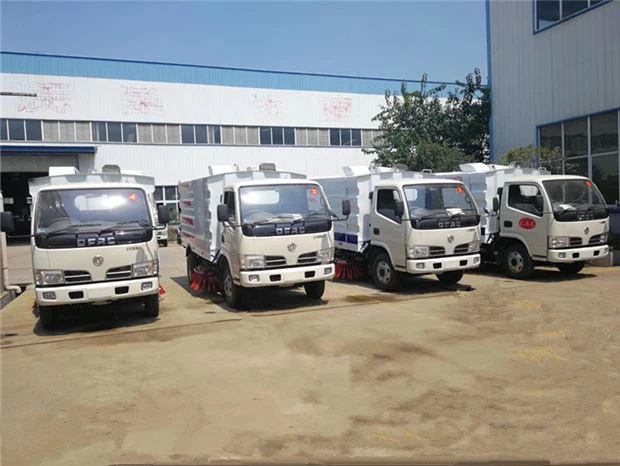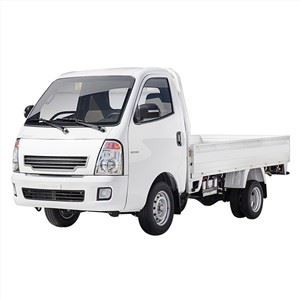Waste trucks play a crucial role in keeping our communities clean and healthy. Understanding their dimensions is essential for city planners, sanitation departments, and anyone involved in waste management. This article delves into the various dimensions of waste trucks, including their sizes, types, and practical applications.
1. What Are Waste Truck Dimensions?
Waste truck dimensions refer to the physical size specifications of garbage collection vehicles. These dimensions can impact their operational efficiency, maneuverability, and parking logistics. Generally, waste trucks are categorized based on their capacity, length, width, and height.
1.1 Key Dimension Metrics
- Length: The total length of the truck from the front bumper to the rear of the truck.
- Width: The total width of the truck, including mirrors.
- Height: The maximum height of the truck, typically measured from the ground to the highest point.
- Capacity: Refers to the volume of waste the truck can carry, usually measured in cubic yards.
2. Standard Waste Truck Sizes
There are several standard sizes for waste trucks, which are tailored to different waste management needs. Understanding these sizes can help in choosing the right vehicle for specific tasks.
2.1 Front Loader
A front loader is often used for commercial waste collection. Standard dimensions include:
| Dimension | Measurement |
|---|---|
| Length | 22-30 Feet |
| Width | 8 Feet |
| Height | 10-13 Feet |
| Capacity | 20-35 Cubic Yards |
2.2 Rear Loader
Rear loaders are common in residential garbage collection. Their dimensions typically are:
| Dimension | Measurement |
|---|---|
| Length | 20-25 Feet |
| Width | 8 Feet |
| Height | 10-12 Feet |
| Capacity | 10-30 Cubic Yards |
2.3 Side Loader
Side loaders allow for efficient waste collection without requiring the driver to exit the vehicle. Standard sizes are as follows:
| Dimension | Measurement |
|---|---|
| Length | 22-30 Feet |
| Width | 8-9 Feet |
| Height | 10-12 Feet |
| Capacity | 15-30 Cubic Yards |
3. Factors Affecting Waste Truck Dimensions
3.1 Geographic Considerations
The geography of an area can greatly influence the size and type of waste truck used. Urban areas with narrow streets may require smaller vehicles, while rural areas can accommodate larger ones.
3.2 Type of Waste Collected
The nature of the waste being collected can also determine truck dimensions. For example, bulky items or recyclables may need more space, resulting in larger trucks.
3.3 Local Regulations
Many cities have regulations that dictate allowable vehicle sizes for waste collection. These regulations ensure safety and accessibility in various neighborhoods.
4. Importance of Knowing Waste Truck Dimensions

Understanding waste truck dimensions is essential for several reasons:
4.1 Efficiency in Waste Collection
The appropriate size truck can minimize the number of trips needed to collect and transport waste, leading to increased operational efficiency.
4.2 Cost Management
Choosing the right-sized waste truck can also lead to cost savings on fuel and maintenance. Larger vehicles may consume more resources than necessary if they’re not needed.
4.3 Safety Concerns
Oversized vehicles can pose safety hazards, particularly in crowded urban environments. Understanding dimensions can prevent accidents and improve safety for drivers and pedestrians alike.
5. Practical Tips for Choosing the Right Waste Truck Size
5.1 Assess Your Waste Collection Needs
Evaluate the volume and type of waste generated in your area. This helps in choosing the appropriate truck size.
5.2 Consider the Local Environment
Take into account road width, turning radii, and parking availability. Smaller trucks may be more suitable for narrow streets.
5.3 Look into Local Regulations
Research regulations regarding vehicle sizes in your municipality to ensure compliance and avoid fines.
6. Innovations in Waste Truck Design
Advancements in technology are leading to innovative waste truck designs aimed at improving efficiency and sustainability.
6.1 Compact Trucks
Compact waste trucks are designed for urban environments. These trucks often have specialized features to navigate narrow streets.
6.2 Automated Systems
Many new waste trucks come with automated collection systems, leading to more efficient and safer waste pickup.
6.3 Eco-Friendly Designs

Environmentally friendly waste trucks are emerging that use alternative fuels, reducing emissions while maintaining the same or better performance.
7. Understanding Waste Truck Weight Limits
Weight limits are as crucial as dimensions when it comes to waste trucks. Exceeding these limits can lead to fines and increase the risk of accidents.
| Type of Truck | Weight Limit (Pounds) |
|---|---|
| Front Loader | 60,000 |
| Rear Loader | 52,000 |
| Side Loader | 65,000 |
8. Waste Truck Dimension and Service Area Planning
Understanding truck dimensions is essential for effective service area planning. Here’s how you can leverage truck sizes for better service:
8.1 Route Optimization
Planning routes based on truck dimensions can improve efficiency and reduce fuel consumption.
8.2 Service Frequency
Understanding how often waste trucks can operate based on their capacity can help in managing schedules effectively.
9. Frequently Asked Questions (FAQ)
9.1 What are the average dimensions of a waste truck?
The average dimensions vary based on the type of truck. For example, a rear loader typically measures 20-25 feet in length and 8 feet in width.
9.2 How do I choose the right size waste truck for my needs?
Assess factors such as the volume and type of waste generated, local geography, and regulations to choose the right size.
9.3 Are there environmental considerations when choosing waste truck dimensions?
Yes, smaller trucks are often more eco-friendly due to lower fuel consumption, while enhanced designs promote sustainability.

9.4 What should I do if my waste truck exceeds weight limits?
Inspect the load and redistribute waste if necessary. Consistent monitoring can help comply with regulations and avoid fines.
9.5 Can waste trucks be customized?
Yes, many manufacturers offer customizable options for dimensions and features based on specific needs.
9.6 What technologies are present in modern waste trucks?
Modern waste trucks may include automated collection systems, GPS tracking, and environmentally friendly fuel options.